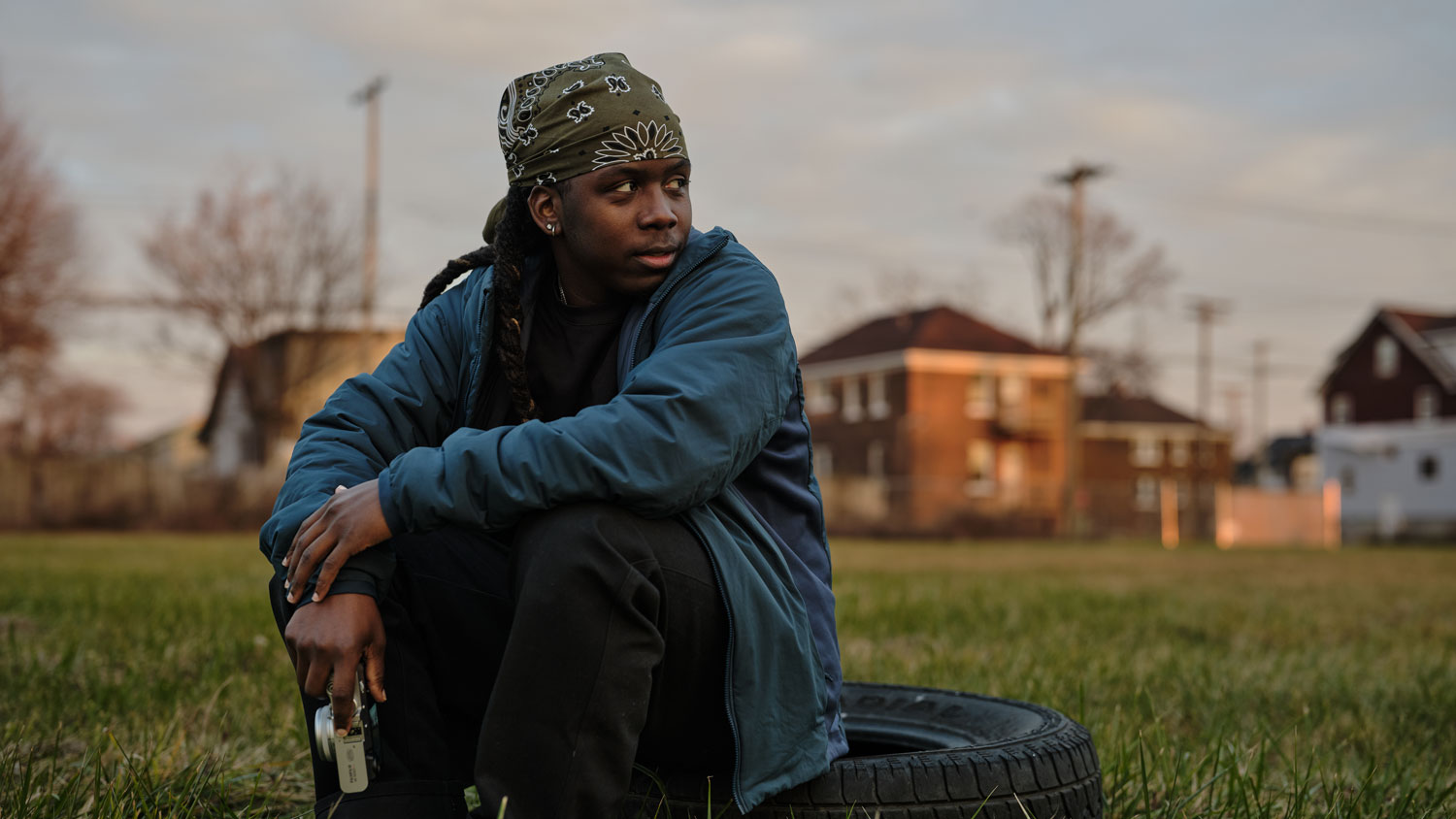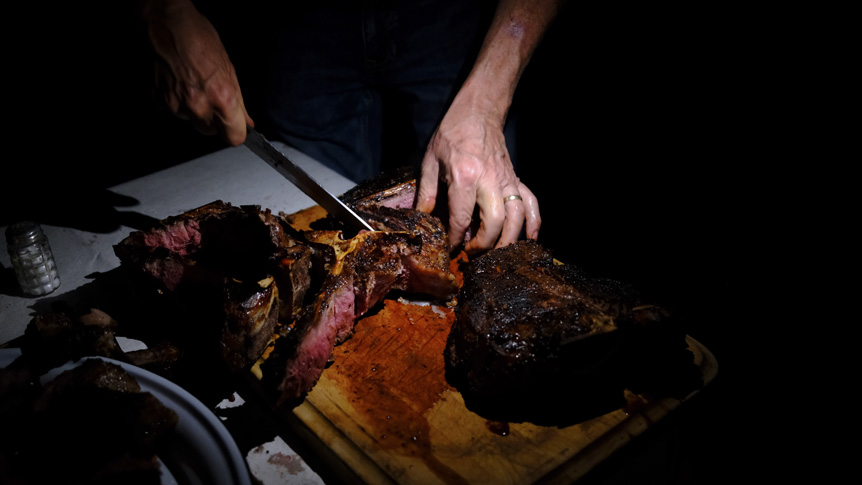
 6 minute read
6 minute read
People Photography Tips from a Pro
Learn a few essential tips for photographing people from environmental portraiture and documentary image maker, Vuhlandes
Photographing people is something the vast majority of us have done. If you are a keen photographer, it’s almost a certainty, but even if you don’t actually own a camera, the chances are you’ve still held one to your eye and shouted ‘say cheese!’.
The physical act of pressing a camera’s shutter release button alone is a relatively simple task, but it takes more than that to make good photos of people. While technique and equipment specification make a big difference, many more factors are at play beyond the technical capabilities of the camera.
So, what makes a compelling photo of someone? What is the difference between an everyday snap and a truly great portrait?
In this article, we speak to Vuhlandes, a photographer and videographer who has been using FUJIFILM X100VI to create a project called Detroit: My Baby – a photo series dedicated to his home city.
As an environmental portraiture and documentary photography specialist, he knows a thing or two about making great people pictures. Below, he shares some of his favorite tips for people photography.

Photo 2022 © Yolanda Hoskey | FUJIFILM X-H2 and FUJINON XF18mmF1.4 R LM WR, 1/80 sec at F4, ISO 800
1. Build a Rapport with Your Subject
There’s no doubt that the best portrait photographs feature a relaxed subject, but that doesn’t always come naturally in a photo session environment.
“It’s not easy being in front of the camera,” insists Vuhlandes. “That’s why it’s important to ensure the person you’re making pictures of feels as comfortable as possible – especially if you don’t fully know them.”
The best way to achieve this is to speak to the person you are photographing. Get to know them a little before you make any pictures. By building a rapport with them, you build trust, helping them feel as comfortable as possible when the photos are being made.
Oftentimes, having your camera in hand can act as a barrier. Try putting it down before speaking to them, to ensure their focus is entirely on you.
Vuhlandes discloses a technique he likes to use to help build a connection with his subjects.
“You can make someone feel comfortable with a more collaborative session. Rather than telling them what you’re going to do, ask them their opinion. That makes creating photos of people a lot easier,” he declares.

Photo 2023 © Shotti NYC | FUJIFILM GFX100 II and FUJINON GF55mmF1.7 R WR, 1/2000 sec at F1.7, ISO 200
2. Use a Smaller Camera
If you’re not working with a professional model, it’s likely your subject will already be somewhat self-conscious, so holding a huge camera in their face will likely increase their nervousness and strengthen their inhibitions.
Not only does a larger object create a physical barrier between you and them, but bigger cameras and lenses carry inherent associations with more formal photography situations like press or fashion photography.
Vuhlandes agrees: “One of my film cameras is massive. People can be intimidated to do certain things or be a certain way because, when you bring out a huge camera, what you’re doing becomes ‘serious’.”
This can make your subject tense and stiff. What you really need, for a truly powerful and genuine image, is for them to drop their guard and lose their inhibitions.
A smaller camera, on the other hand, breaks down the physical barrier, helping you find a personal connection and build trust. Rather than any serious connotations, subjects are more likely to associate a smaller camera with everyday snaps of family and friends, which will make them naturally more relaxed.
“Making portraits with smaller cameras like X100VI helps people feel more at ease. You can create anything with that camera, but its small size doesn’t put pressure on the people in the photos,” explains Vuhlandes.

Photo 2023 © Vuhlandes | FUJIFILM X100VI, 1/60 sec at F2, ISO 1000
3. Choose the Right Location
Setting plays a huge part in how your final image turns out – from the available light and background to the story you are telling.
For example, moving a subject from a field full of flowers on a bright summer’s day to a city street at night can significantly change not only how your image looks, but also the feeling it conveys.
That’s why many photographers hold location in high regard, devoting a lot of time to finding the perfect spot.
“I have entire scouting days where I just look for locations – I don’t even take a camera with me, I just jot things down,” Vuhlandes reveals.
“I’ll be at a location and ask myself: what images would I want to create here? Who would I want to photograph? What type of story would I like to tell? I write all that down, then present it to someone, find wardrobe, and create the vibe of the image.”
Location can also help your subject feel more relaxed. A person would feel more comfortable being photographed in their front room than a public square, for instance.
As such a critical ingredient for success, it’s definitely worth planning ahead. Learn more about choosing the right photo location here.
4. Use the Light
In photography, light is the most important factor separating an okay image from an excellent one.
While lighting setups are regularly used in portraiture, they are not essential. In fact, using the natural light available at the location is often preferable. Environmental portraiture is a great example because ambient light plays a vital role in reflecting the true atmosphere of a scene.
There is no best way to light a subject in portrait photography, only the right way for the project. This could depend on the atmosphere you’re trying to convey or the story you’re trying to tell.
“I like to make photos of someone from the shadow side of their face,” states Vuhlandes. “That brings more depth and more interesting contrast to a photo. It also brings out a person’s features,” he explains.
The best way to learn what lighting techniques work for your style is to experiment. Check out our Lighting Masterclass to learn how you can use light for specific effects.

Photo 2023 © John Branch IV | FUJIFILM GFX100S and FUJINON GF55mmF1.7 R WR, 1/320 sec at F1.7, ISO 160
5. Choose Your Angle and Pose
Angle and pose also play an important part in achieving a great portrait photo. You may be surprised at how big an effect small changes can have.
Vuhlandes prefers to make photos of a subject from a slight angle rather than straight on – this makes it more immersive.
“It adds more interest to the picture,” he says. “In my opinion, making a picture straight on lacks that extra depth – especially photos of people in an environment.”
Furthermore, the angle you choose to frame the image from can significantly change the story. It can also allow you to implement foreground or background features as part of your composition.

Photo 2023 © John Branch IV | FUJIFILM GFX100S and FUJINON GF55mmF1.7 R WR, 1/200 sec at F1.7, ISO 125
Read more about Vuhlandes’ project, or browse all the content on Exposure Center for education, inspiration, and insight from the world of photography.
For more information about the camera Vuhlandes used for his project, shop X100VI today and read the full specifications here.




























































